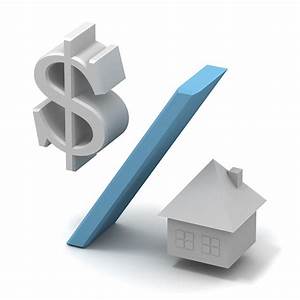TRENDING WHITEPAPERS,VIDEOS & MORE
REIS: Apartment Vacancy Rate Hits 4.8% in Q3
- Monday, 08 October 2018
- Commercial Lending

The apartment vacancy rate increased in the third quarter to 4.8%, from 4.7% last quarter, and 4.4% in the third quarter of 2017.
The vacancy rate has now increased 70 basis points, from a low of 4.1% in Q3 2016, according to a survey from Reis. The national average asking rent increased 1.2% in the third quarter while the average effective rent, which nets out landlord concessions, also increased 1.2%.
At $1,424 per unit (market) and $1,356 per unit (effective), the average rents have increased 4.5% and 4.2%, respectively, from the third quarter of 2017. Net absorption was 35,683 units, lower than the previous quarter’s absorption of 57,988 units and below the average quarterly absorption of 2017 of 46,685 units. Construction was 50,475 units, also below the second quarter’s 67,417 units and below the 2017 quarterly average of 61,535 units.
 The statistics show that 45 metros saw an increase in vacancy this quarter as higher construction in these metros exceeded net absorption. Metros with the highest vacancy rate increase include Chattanooga, Fort Lauderdale, Louisville, Miami and Orlando. Metros that saw the sharpest vacancy decline include Pittsburgh, Tulsa, Birmingham, Austin and Indianapolis.
The statistics show that 45 metros saw an increase in vacancy this quarter as higher construction in these metros exceeded net absorption. Metros with the highest vacancy rate increase include Chattanooga, Fort Lauderdale, Louisville, Miami and Orlando. Metros that saw the sharpest vacancy decline include Pittsburgh, Tulsa, Birmingham, Austin and Indianapolis.
All of these metros, however, posted positive rent growth. In fact, 48 metros saw an increase in effective rent of 1.0% or more, including Memphis, San Diego, Los Angeles, Seattle and Birmingham that saw effective rent growth of 2.0% or more in the third quarter. Only three metros posted an effective rent decline: Orange County (CA), Lexington and Fairfield County. Thus, rent growth continues to be driven by robust construction and not by increases in vacancy.
The U.S. added an average of 207,000 jobs per month in the first eight months of the year, up from an average increase of 189,000 jobs in the first eight months of 2017. The top five metros with respect to year-over-year job growth are Orlando, San Bernardino-Riverside, Colorado Springs, Austin and Dallas. No metro shows a loss of jobs over the year.
Read more...
Freddie-Enterprise Close First Low-Income Housing Tax Credit Fund in almost a Decade
- Friday, 05 October 2018
- Commercial Lending

Freddie Mac has closed its first Low-Income Housing Tax Credit Fund with Enterprise Community Investment Inc. and completed its first equity investment within that fund. The closing marks Freddie’s re-entry into LIHTCF market after an almost ten-year absence; the fund is the mechanism that finances most of the country’s affordable rental housing.
[caption id="attachment_6557" align="alignleft" width="150"] Freddie Mac enters low income housing tax credit market.[/caption]
Freddie Mac enters low income housing tax credit market.[/caption]
The fund will invest nationwide to create and preserve affordable homes. It will focus on areas and transactions that have been underserved over the past decade, such as rural communities, four percent LIHTC financing, and developments that provide intensive supportive services to their residents, such as health care and job training. The fund will provide as much as $100 million in targeted affordable housing investments, with more investments possible as additional transactions are closed. Since 1982, Enterprise has invested $12.8 billion in LIHTC equity to finance more than 150,000 homes.
This is “our first Low-Income Housing Tax Credit fund in nearly a decade, and the first transaction as part of that fund,” said David Leopold, vice president for targeted affordable Sales and investments. “This transaction with Enterprise is the first of many investments that will provide highly targeted affordable housing to some of the most underserved communities in the country.”
Also, Freddie Mac and Enterprise announced an $8.2 million investment in Wintergreen West, which will provide 40 apartment homes for residents of Summit County, Colorado, a rural area 75 miles west of Denver. The units will range from one- to three-bedrooms and offer homes to people earning 30-60 percent of the area’s median income. Currently, it is difficult for low- and moderate-income residents to find affordable homes in the area, and short-term rentals have exacerbated the challenge. This new construction will be part of a larger, mixed-income community.
“This fund restarts a crucial partnership for producing well-designed, affordable homes,” said Charlie Werhane, president and CEO of Enterprise Community Investment. “We look forward to working with Freddie Mac to provide homes that create opportunity for low- and moderate-income people in diverse, thriving communities.”
More than 19 million households across the country are cost-burdened, meaning they pay more than 30 percent of their income for housing. Eleven million are severely cost-burdened, paying more than 50 percent of their income for housing. Freddie Mac and Enterprise are proud to be working together to address this vast and growing need through the Low-Income Housing Tax Credit.
Read more...May Construction Starts Climb 15 Percent
- Wednesday, 20 June 2018
- Commercial Lending

[caption id="attachment_5116" align="alignleft" width="150"] Dodge Data's Robert Murray: Thinks the loosening of Dodd-Frank regulatory constraints on mid-size regional banks could lead to more construction projects being funded.[/caption]
Dodge Data's Robert Murray: Thinks the loosening of Dodd-Frank regulatory constraints on mid-size regional banks could lead to more construction projects being funded.[/caption]
At a seasonally adjusted annual rate of $783.6 billion, new construction starts in May advanced 15 percent compared with April. The increase follows a 12-percent decline in April and shows total construction activity reaching the highest level reported over the past eight months, according to Dodge Data & Analytics. The lift in May came from substantial gains for nonbuilding construction, up 39 percent; and nonresidential building, up 18 percent; as both sectors benefitted from the start of several very large projects.
Nonbuilding construction, and specifically its public works segment, was boosted by the start of three large natural gas pipelines with a combined construction start cost of $4.6 billion, plus $1.4 billion related to the start of an environmental cleanup project at the Los Alamos National Laboratory in New Mexico, a $1.4 billion rail transit project in Los Angeles CA, and a $1.1 billion rail transit project in the Boston area. Nonresidential building was aided by the start of a $1 billion Facebook data center in Nebraska, the $764 million expansion to the Washington State Convention Center in Seattle, and a $740 million airport terminal project at Salt Lake City International Airport. Meanwhile, residential building in May held steady with its April pace.
Through the first five months of 2018, total construction starts on an unadjusted basis were $299.9 billion, down 3 percent from the same period a year ago. On a twelve-month moving total basis, total construction starts for the twelve months ending May 2018 were up 1 percent compared with the amount reported for the twelve months ending May 2017. The May statistics raised the Dodge Index to 166 (2000=100), compared to April’s reading of 144, revised from the initially reported 143.
“On balance, the pace of total construction starts is staying close to the levels achieved over the past year, when activity grew 5 percent. It’s true that the construction industry is facing increased headwinds, such as higher material prices and the recent pickup in interest rates, but to this point they have not yet produced a discernible negative impact on the overall level of construction starts,” said Robert Murray, chief economist for Dodge Data. “Bank lending standards for nonresidential building projects have eased slightly, and the recent rollback of Dodd-Frank regulatory constraints on mid-size regional banks may lead to more funding for construction projects in the near term.”
Click below as Murray discusses Construction Starts in May.
[audio m4a="http://themortgageleader.com/wp-content/uploads/2018/06/Dodge-Data-Analytics-May-2018-Construction-Starts.m4a"][/audio]
Nonbuilding construction in May was $222.1 billion on an annual basis, rebounding 39 percent after sliding 23 percent in April. The public works project types as a group surged 47 percent, boosted by a 169 percent jump by the miscellaneous public works category that includes pipelines, rail transit and site work. Residential building in May was $312.8 billion, on an annual basis, essentially unchanged from April. Multifamily housing in May made a partial 13 percent rebound after a 20 percent decline in April. There were six multifamily projects valued each at $100 million or more that reached groundbreaking in May, compared to four such projects in April.
Leading the way was the $173 million multifamily portion of a $200 million mixed-use high-rise in Oakland, $162 million for two residential towers in Bethesda, Md., and $155 million for the multifamily portion of a $190 million mixed-use complex in the San Jose area. In May, the top five metropolitan areas ranked by the dollar amount of multifamily starts were – New York, District of Columbia, San Francisco, Miami and Dallas-Ft. Worth. Metropolitan areas ranked 6 through 10 were – Boston, Seattle, Orlando, Los Angeles and Atlanta.
Single family housing in May retreated 4 percent from the previous month, as the continued expansion for this project type struggles to take hold in early 2018. By geography, single family housing showed this pattern in May relative to April – the South Central, were down 8 percent; the West and South Atlantic were each down 6 percent; and the Midwest and Northeast were each up 5 percent.
Residential building year-to-date increased 5 percent, with single family housing up 6 percent and multifamily housing up 3 percent. By major region, total construction starts during the first five months of 2018 performed as follows – the Northeast was down 12 percent; the Midwest was down 8 percent; the West was down 4 percent; the South Central was down 1 percent; and the South Atlantic was up 4 percent.
A useful perspective comes from looking at twelve-month moving totals, in this case the twelve months ending May 2018 versus the twelve months ending May 2017. On this basis, total construction starts were up 1 percent. By major sector, nonresidential building fell 4 percent, with commercial building down 9 percent, institutional building down 3 percent, and manufacturing building up 15 percent.
Nonbuilding construction advanced 8 percent, with public works up 11 percent while electric utilities/gas plants dropped 7 percent. Residential building increased 3 percent, with single family housing up 7 percent while multifamily housing fell 6 percent.
Read more...Lenders’ Biggest Dilemma: Invest in Training Or Be Replaced
- Wednesday, 24 March 2021
- Originating

In the last few weeks, nearly every conversation I’ve had with senior mortgage executives has centered on one of two issues: finding sales and processor talent, and delivering an excellent customer experience throughout the loan process.
Read more...



